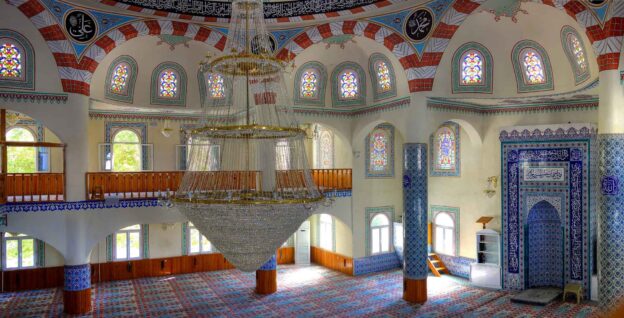About AKDC@MIT
The Aga Khan Documentation Center of the MIT Libraries (AKDC@MIT) is a research center focused on the built environment of Muslim societies, broadly defined. AKDC@MIT supports teaching of and scholarship on the history and theory of architecture, urbanism, environmental and landscape design, visual culture, and conservation. With particular focus on the research and teaching activities of the faculty, students, and post-doctoral fellows of the Aga Khan Program for Islamic Architecture (AKPIA) at MIT and Harvard. Situated within the MIT Libraries, AKDC@MIT is a part of AKPIA, established in 1979 by a gift from His Highness the Aga Khan.
Through the acquisition of select archives, the Documentation Center is a repository of primary sources including:
- Aga Khan Visual Archive
- Architects’ Archives
- Scholars’ Archives
- Other specialized archives and collections
AKDC@MIT is part of the MIT Libraries Department of Distinctive Collections (DDC). The Center funds acquisitions and cataloging of visual and printed documentation on the visual and material cultures of the Islamic world writ large, building rich collections in all languages and formats in these subject areas. AKDC@MIT acquires research materials not commonly found in other collections in North America for the MIT Libraries, including a wide range of specialized periodicals, monographs on architecture, urban planning and development, maps, and documents of preservation and planning authorities.
AKDC@MIT is also responsible for curation of the intellectual and content core of Archnet, a globally-accessible, intellectual resource focused on architecture, urbanism, environmental and landscape design, visual culture, and conservation issues with a focus on Muslim cultures and civilizations.
The Aga Khan Documentation Center, MIT Libraries is partnered with the Documentation Center of the Aga Khan Program for Islamic Architecture at Harvard University. Harvard and MIT affiliates have reciprocal access to library collections at both institutions. The Centers provide, acquire, and borrow materials necessary to produce the best scholarship possible and through planned activities, aim to play a significant role in bringing together the various interests and fields of inquiry from both institutions.
